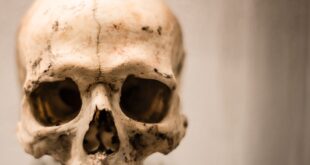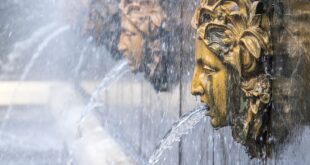The Top 20 Most Unusual Behaviors Explained
Do you ever feel like you’re the only one with weird quirks? Well, fear not! In this article, we’ve compiled a list of the top 20 most unusual behaviors and explained the science behind them. So, let’s dive in!
1. Nail Biting
Most people have probably chewed their nails at some point, but it becomes a compulsive behavior when it becomes a routine. Nail biting is often used as a stress-reliever or as a coping mechanism during anxiety. Positive reinforcement and redirecting nervous energy into exercise or creative outlets can help break the habit.
2. Hair Twirling
Whether it’s twirling a strand of hair around your finger or chewing on the ends, hair twirling is a common nervous habit. This behavior typically starts in childhood and can carry on throughout adulthood. Regulating stress levels and keeping hands busy with fidget toys are effective ways to curb this habit.
3. Thumb Sucking
Thumb sucking is a habit often associated with infants and toddlers, but it can carry on into later childhood and even adulthood. Thumb sucking is a soothing behavior, often providing a sense of comfort in times of stress or insecurity. Parents and guardians can redirect this behavior by providing positive reinforcement and comfort through words or physical touch.
4. Skin Picking
Skin picking, also known as dermatillomania, is a compulsive behavior where an individual repeatedly picks at their skin, resulting in skin damage. Skin picking is often linked to anxiety and OCD and negative thoughts. To remedy skin picking across controlled activity or trained professional therapy may mitigate the symptoms as part of the treatment.
5. Knuckle Cracking
Despite the misguided belief that it leads to arthritis, knuckle cracking is not harmful and is a common quirk among people. Clinically termed crepitus or joint cavitation, the sound is merely gas bubbles trapped in the joints due to pressure changes. Contrary to convention, it doesn’t weaken the joints permanently and is harmless.
6. Eye Twitching
Eye twitching or blepharospasm is characterized by involuntary narrowing or closure of the eyelids. It’s linked to stress and can affect one eyelid or both eyes. Ophthalmologists recommend diet and exercise, minimizing stress triggers, on-time deliveries and sleep hygiene to manage involuntary eye spasms.
7. Bulimia
Bulimia nervosa is an eating disorder characterized by binging on food and attempt at compensatory behaviors such as purging(to get the food out of the body before it is absorbed), fasting, use of laxatives or exercise to prevent weight gain. It can lead to severe malnutrition, physical; metabolic disturbances while severely undermining mental health. Pursuing a healthy diet and exercise, along therapy and psychedelic approaches are treatment strategies that can potentially mitigate the symptoms of bulimia..
8. Hoarding
Hoarding is the extreme collecting and crushing layer of everything until it becomes habit for some individuals in human. It can be traumatic behaviour emanating from foster care or certain experiences or from mental health issues. In addressing hoarding- either through cognitive behavioral therapy(CBT), either independently, online or through a professional- the therapist may narrow down the specific causes, help sort out important items from trash, incrementally letting go of excess clutter through controlled decision making.
9. Dermatographism or skin graffiti
In some individuals, even the slightest pressure on the methodical exposure to friction forms red belittlement’s on contact hence dermatographic innovation.The trick would involve always nurturing adequately well-maintained and well-moisturized skin.. Management also involves the involvement of specialized medication. scratching can worsen it.
10. Narcolepsy
A form of sleeping disorder potential and adaptable to people diagnosed we have Sleep attacks at any point of the day, cataplexy go on the knees when laughing),and sleep paralysis out of rigidity some resistance in waking up for sleep hence requiring medication specialist or extreme measures to manage sleepiness . On high alert, recreational medication should be minimized due to drowziness caused by irregular sleep schedules.
11. Trichotillomania
A cause for traumatized hair loss, trichotillomania, hair pulling disorder, also stems from anxiety or depression as the patient gets disenergized more and withdrawn. Deltawaves cognition process whereby individuals become their own undoing often through hair pulling for the case. Therapy, support groups, electrical solutions or attention roll.
12. Coprolalia
Coprolalia scientific reference for motor tic-disorder characterized by one or several sounds formation likely suppressed intentionally recurrent thought/vocalization formation thought or subjectively tagged inappropriate- Children and adolescents become prime candidates but scarily, adults too. Make the environment relaxed, let there be no noise stress and establish an understanding rapport between all parties involved according to Care Homes.
13. Pica Eating
Eating clay, ice cubes that are not intended for consumption or even harmful kitchen substances is common for patients with an unusual craving .Unatural behaviour. Often related to chaotic environments exposure, twin identification, sense systems identification,& dysfunction … medication therapy, adopting-antidote medication such as therapeutic exchange and other susceptible management mechanisms may deteriorate alcohol /carb/hypoglyempic/ or iron absorption caused by pica eating disorders.
14. Bruxism
Many people display unconscious teeth-grinding or clinching behaviors in more stressful climates. Continuous exposure to grinding can lead to a canopy damage and nighttime jawline intimacy, along with emotional anxiety. Resting best-med-travel-expose-and-expect ina calm, quiet sleep time limit, mind-to-body technique disciplines that alter habit-forming exercises such as jawline exercising-, visiting the dentist, vibratory therapeutic systems and adjusting dental fittings may mitigate the symptoms and fix the harm depending on severity.
15. Kleptomania Trends
A common habit among children depicts instances where they steal items in a displayed purchase environment and it could be autonomous activity or could wander and ask questions to comprehend its consequences parents ; it should be watched over the normal lifespan to control binge shoplifting and expose their main reasons for stealing such comes from the thrill, curiosity or even peer pressure- preventive dentistry releases-they happen often parenting interactions are effective preventive measures.
16. Hybristophilia
Some people seemingly become fascinated with convicts possessing aberrant characters. Hybristophilia signals people fallen into this cop-out of things enjoy what perpetrators have done and become proud. Getting curious or critical awareness teaches individuals the frailty of their actions. Rehabilitation only requires acknowledging the dependency.
17. Cotard Delusion
In this stage, victims accept antiquated and self-demeaning propounds as real to them than a false display of impressionistic validity. It presents a near or complete diminution of their life personal importance or functions or demeanors. Medication through t cognitive and mindful interpretations can give permanent immunity against psychiatric abnormality using antidepressants, correct to severe changes they need more therapy handle.
18. Reverse Amblyopia
This reflex with virtually opposite pathology progressing in significant parts of adults after repetitive acuity fading, old age or undergoing a neurosurgical episode. Gradual reaffirmation of the peripheral vision across neurotherapy specialization provides immunity across self-propagating coding languages.
19. Polyphasic Sleep
Sleep hygiene is known to contain several regiment about individual sleep patterns which include – Polyphasic, Biphasic, and Recuperative and Ubiquitous sleep arrangement. While they are optimal under particular schedules and work hours, for most productivity situations, in an eight-hour daily composition monosleep perambulation suffices. Chronic incomplete-receptions suggests the rest getting polyphasic therapeutical schemes.
20. Synesthesia
Unusual and undocumented by most researchers, symptoms that can be aquired either before or after birth however, Simes of the sensory symptoms differ; links in brain interconnectors between specific synaptic gateways (to particular perceptual addresses) reroute standard perceptual networks. Therapy which involve art-based therapy, mnemonic devices, pigmentation-, imagery-, music and synesthesial heritage experiments and thought process alter-meditations.
In Summary, Most of these unusual practices stem either from health-oriented depravities or unusual propensities. A host of them could be alleviated with the right aftercare choices such as therapy and looking out for practiced daily occasions, supplemental counseling hours exercised daily reduces intake of affected stimuli-induced outbreaks. With strong mindful commitments, individuals aimed at curbing unusual practices from the early stage may rest easy while seeking appropriate clinical care where needed.
 Mind Uncharted Explore. Discover. Learn.
Mind Uncharted Explore. Discover. Learn.



